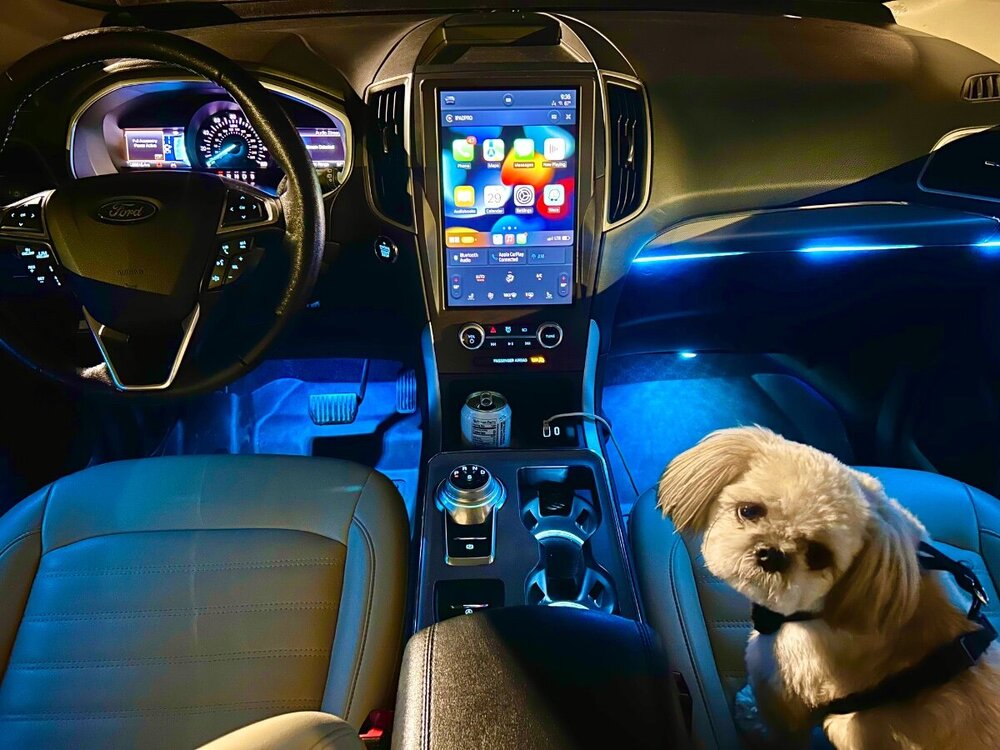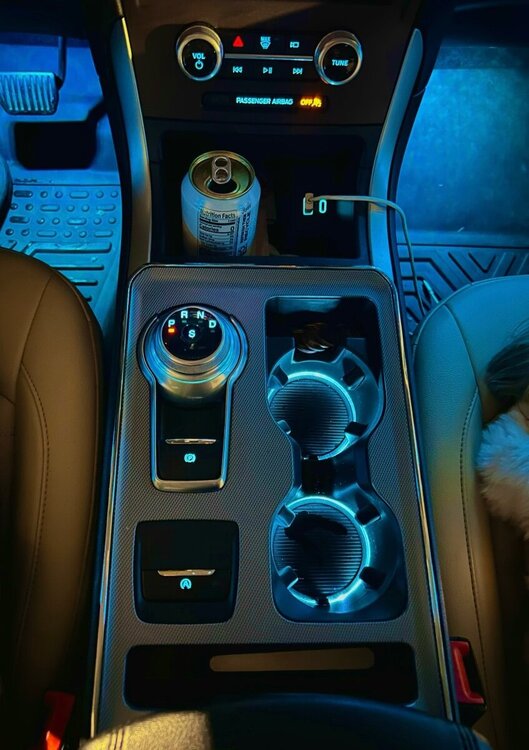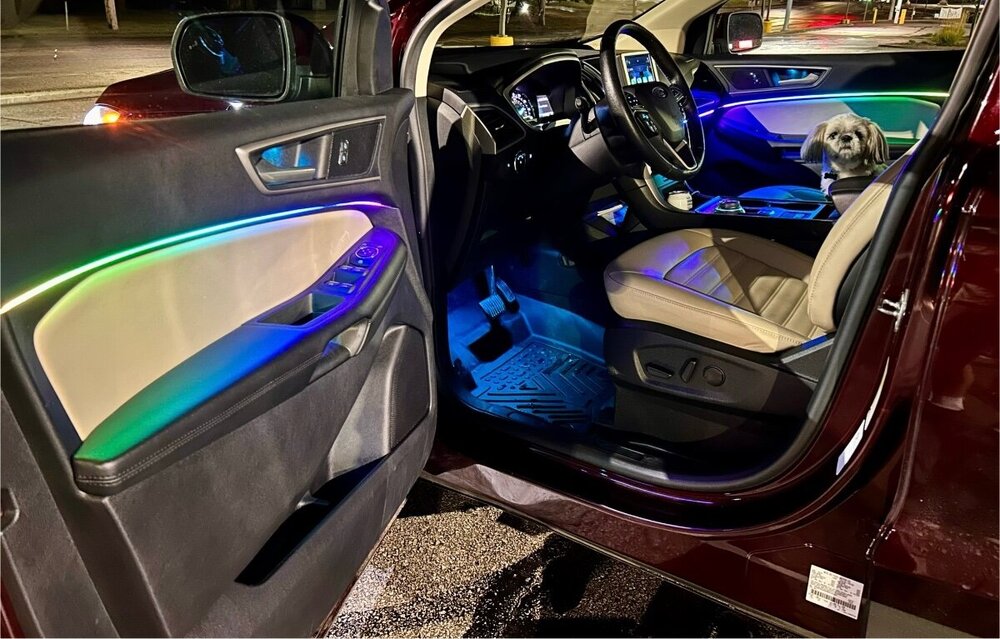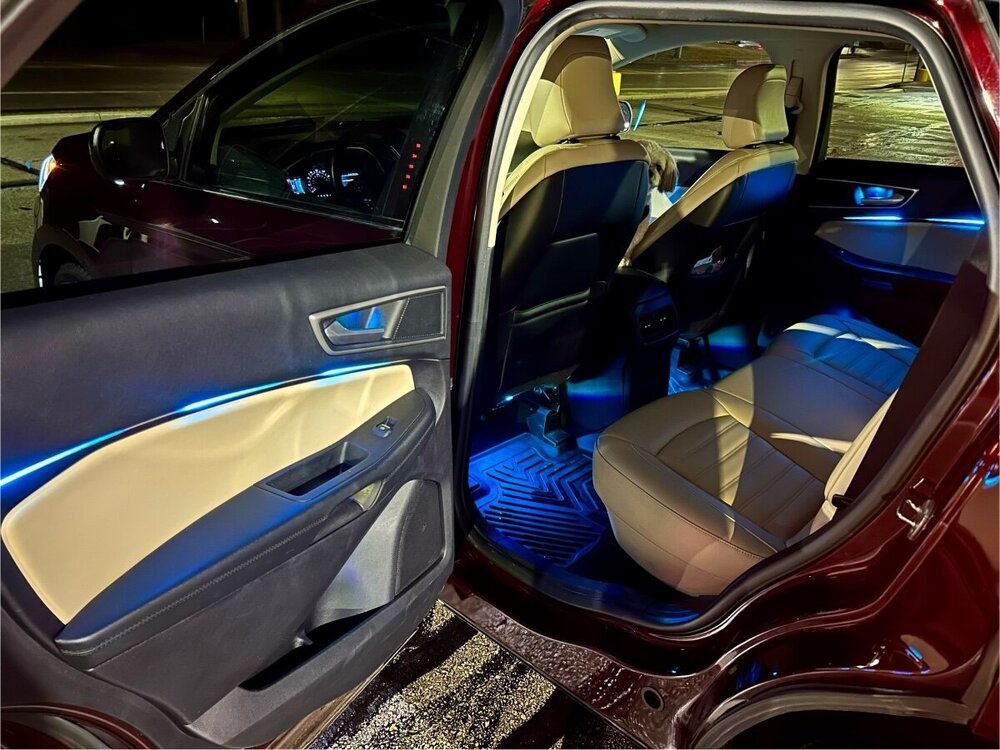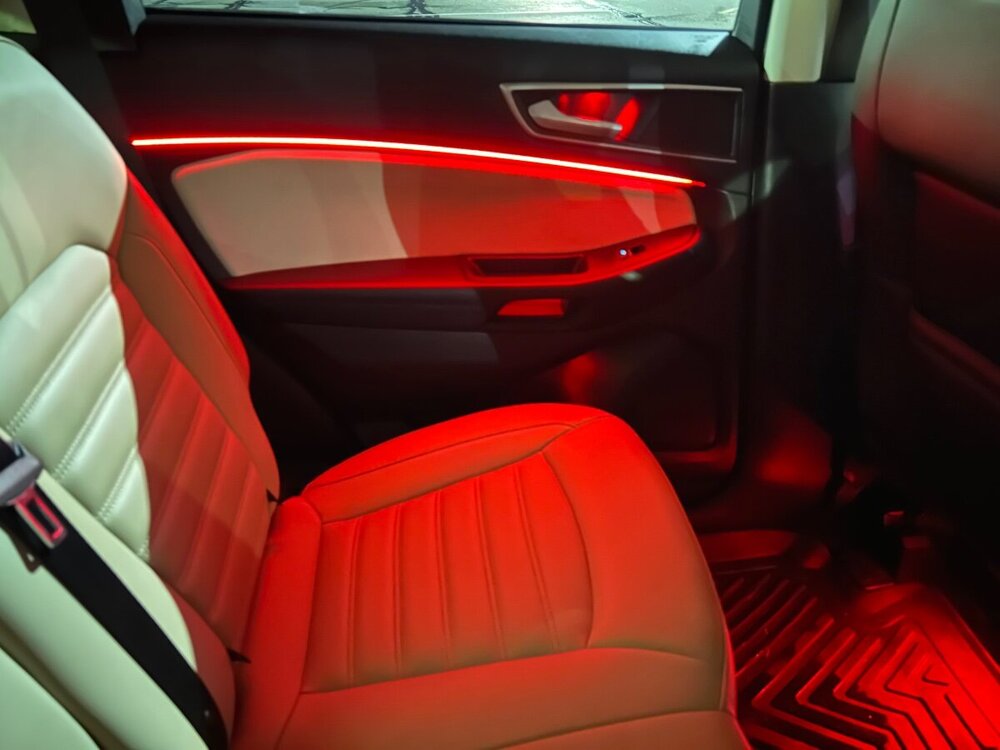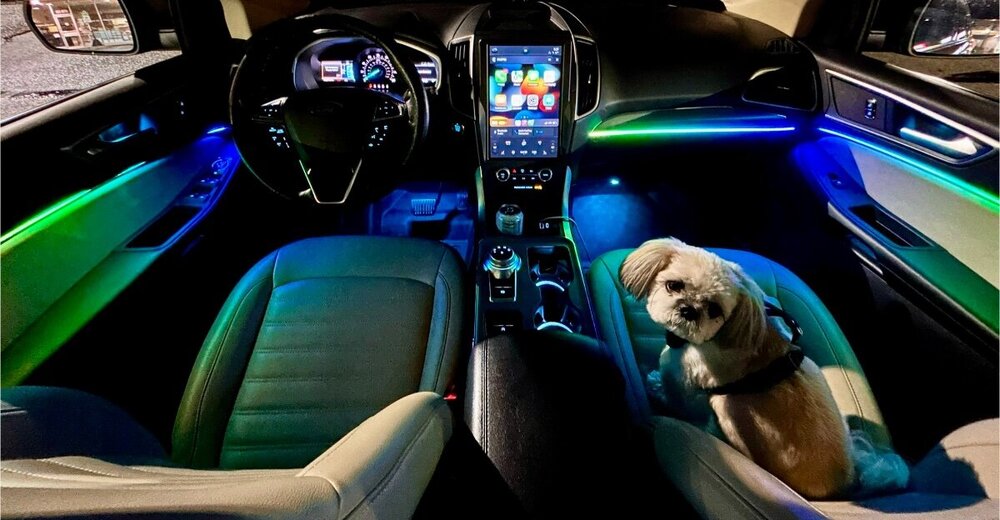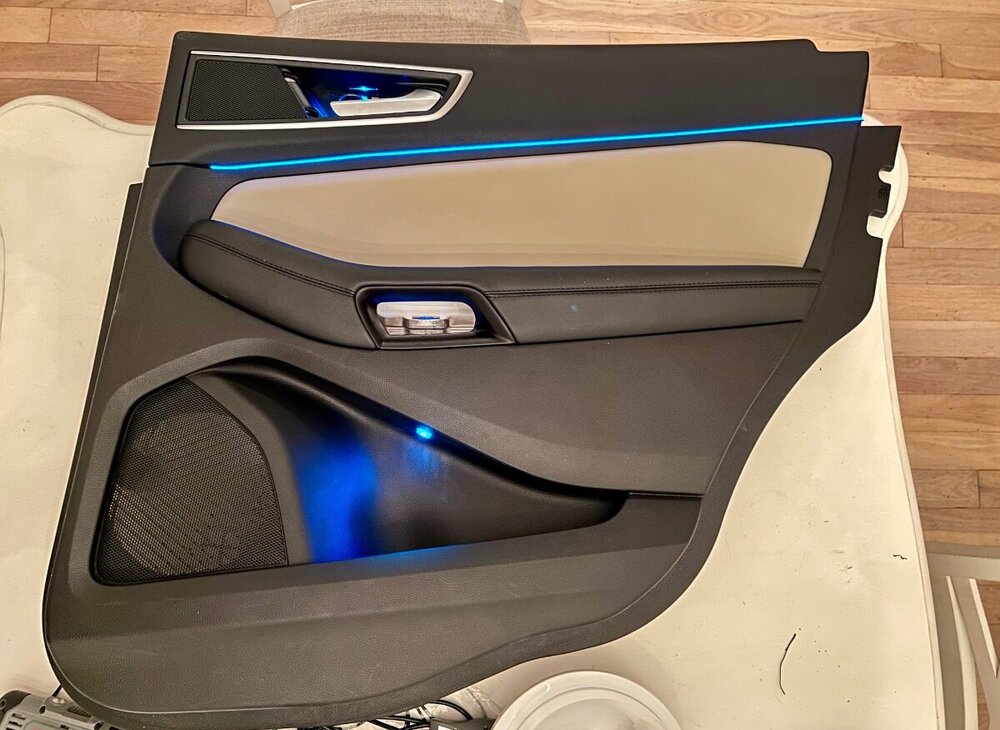-
Posts
609 -
Joined
-
Last visited
-
Days Won
19
Content Type
Profiles
Forums
Gallery
Everything posted by Wubster100
-
The same things are happening to me. If I go for a longer drive (20 minutes) I am able to listen to the radio. My FordPass will stay connected for a while.
-
The battery in my 2021 is getting bad. It’s just a waiting game until one day the car doesn’t start.
-
This definitely reminds me of the Toyota/Lexus beep. What do the corner lights do on the Nissan? Did the corner lights ever come on for other functions when you didn't lock the car?
-
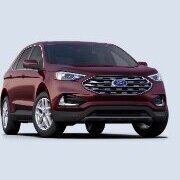
Rear view camera guidelines are missing
Wubster100 replied to ciggy's topic in Audio, Backup, Navigation & SYNC
FORScan is a free software. You only need to get a supported adapter for about $35 USD. -

Project - Get Active Cruise Control functioning
Wubster100 replied to andyh1108's topic in Accessories & Modifications
Adaptive cruise control down to 0 km/h and lane centering will not be possible without replacing many parts. It will be expensive and complex. It has been done on a Fusion before by replacing PSCM, SCCM, GWM, IPMA, CCM, all from a 2020 Edge. -

Project - Get Active Cruise Control functioning
Wubster100 replied to andyh1108's topic in Accessories & Modifications
Can you provide more information such as the vehicle year/trim level/region? -

Questions, Comments & Complaints on 2020 Edge.
Wubster100 replied to JohnRR's topic in 2019-Current Edge & Nautilius
Failure Modes When a DTC is present in the PSCM, the EPAS enters 1 of 2 modes of operation. The EPAS system enters a reduced steering assist mode to protect the internal components of the EPAS system when a concern is detected by the PSCM such as low or high battery voltage or over-temperature concerns not considered to be a critical safety concern. This reduced steering assist mode gives the steering a heavier than normal feel. The EPAS system enters a manual steering mode (no electrical steering assistance is provided) when a concern considered to be a critical safety concern is detected. In manual steering mode, the vehicle has mechanical steering operation only, which gives steering operation a heavy feel. There are 3 failure strategies used by the PSCM for determining failure modes. The first strategy is limp home; when the PSCM detects a fault requiring the EPAS to switch to a failure mode, the PSCM calculates a "safe" level of torque assist and provides this assist until the ignition is cycled. If the fault remains during the next ignition cycle, the PSCM switches to manual steering mode until the fault is repaired. If the fault is not present during the next ignition cycle, the PSCM resumes normal operation and steering assist. The next strategy is limp aside; similar to the limp home strategy except the limp aside strategy can recover normal steering assist during the same ignition cycle if the fault is no longer present or the ignition is cycled. If the fault is still present, the PSCM switches to manual steering mode until the fault is repaired. The last strategy is ramp down; the PSCM uses all the various inputs to calculate a torque output command to provide steering assist, if the module cannot calculate this output, it uses the last known good torque command to provide steering assist until the PSCM completely removes assist and switches to manual steering mode until the fault is repaired. -
Finally finished installing ambient lighting in my 2021 Edge. The cup holders are OEM and everything else is aftermarket. The cup holders are only ice blue, and they are controlled by the SYNC screen. In each door, I installed a light in the door handle, door storage, and an LED strip along the door trim. I also installed 4 LED lights under the seats to light up the footwell areas. I also installed an LED strip above the glove box. All of the aftermarket lights are controlled by a hidden physical switch or with Bluetooth from my phone. I was able to get the cup holders for free by using Fordpass Points, and the aftermarket lights were only $34 USD (including shipping) for everything. Overall I am happy with the new ambiance.
-

Ford Edge Forum: WHAT HAPPENED?
Wubster100 replied to robertlane's topic in Forum Help & Site Suggestions
I hate the time out when searching for stuff in the forum. Why do I have to wait if I want to make a new search immediately following a previous search? It must be to prevent spam requests or something. -

Ford Edge Forum: WHAT HAPPENED?
Wubster100 replied to robertlane's topic in Forum Help & Site Suggestions
Haz is the best! -
At night, I can see a slight red reflection when I look back. Too bad we don’t have any drive modes like an eco mode.
-

Heated Mirror Question
Wubster100 replied to BMWR1200c's topic in Glass, Lenses, Lighting, Mirrors, Sunroof (BAMR), Wipers
The options that you see in FORScan are not always 100% reliable and correct. There may be differences due to vehicle model, firmware revision, region, etc. -
Both adaptive cruise control and normal cruise control will apply the brakes to slow down when your vehicle's speed is above the set cruise speed. This could hurt fuel economy when coasting down a hill. In theory, you should be able to achieve the best fuel economy by driving manually instead of using cruise control.
-

2020 Ford Edge RDU Fluid Replacement Observations
Wubster100 replied to MLLI18's topic in 2019-Current Edge & Nautilius
Thanks for sharing. I would like to replace my fluid soon. -
I probably won’t take the vehicle to a shop, just to save on labor cost. But I could try drain and fill 3 times, which should replace most of the fluid. And I can also try resetting the adaptive learning tables.
-
@BMWR1200cHere are the diagrams for the tail lights.Reversing Lamp - LH, Low Series Design - Connector C451 Details - 2020 Edge.pdf Rear Lamps - Wiring Diagram - 2020 Edge.pdf Reversing Lamp - RH, Low Series Design - Connector C461 Details - 2020 Edge.pdf Reversing Lamps - Wiring Diagram - 2020 Edge.pdf Rear Lamp Assy with Reversing Lamp - LH, High Series Design - Connector C4483 Details - 2020 Edge.pdf Reversing Lamp - LH, Low Series Design - Connector C451 Location - 2020 Edge.pdf Rear Lamp Assy with Reversing Lamp - RH, High Series Design - Connector C4484 Details - 2020 Edge.pdf Rear Lamp Assy with Reversing Lamp - LH, High Series Design - Connector C4483 Location - 2020 Edge.pdf Reversing Lamp - RH, Low Series Design - Connector C461 Location - 2020 Edge.pdf
-
My 2021 SEL has just about 70k miles and every once in a while there is a little bit of a harsh shift. I have only drained and filled the transmission once. I don’t think it made a big difference. I’m not expecting super smooth shifts each time, but I guess I will just have to keep doing drain and fills. I really hope that this transmission will make it to 200k miles and I would be happy.
-

New to the Forum, the Ford Edge and Canada
Wubster100 replied to Jay From SA's topic in Welcome Forum!
Hello from Pennsylvania -
I have an SEL and I have thought about upgrading my tail lights. The problem is that the cost of parts are too high. I am seeing about $200 to $300 USD for one tail light, and all 4 tail lights would need to be replaced to complete the full upgrade. Almost $1,000 USD for 4 used tail lights. But in terms of wiring and programming the lights, that is definitely doable. What I really want to see is someone try to fit the 2015-2018 tail lights into a 2019-2024. I think it would be nice to have a line of red leds across the back.



